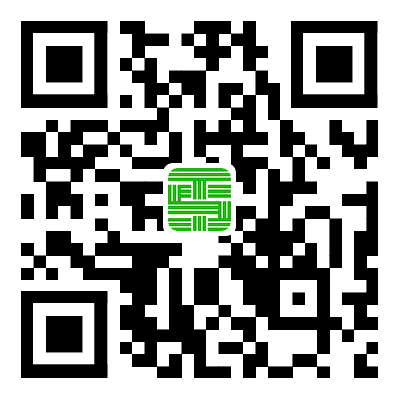
Printing and dyeing aids can be divided into printing aids and dyeing aids. Printing aids include adhesives, thickeners, crosslinking agents, emulsifiers, softeners, diffusers, and defoamers, while dyeing aids include leveling agents, fixing agents, dispersants, fluorescent brighteners, and softeners.
Refining aids
The desizing, scouring, bleaching, and mercerization treatment of fabrics are all important processes before printing and dyeing, collectively referred to as refining.
Refining involves boiling the desized cotton fabric in a 10g/L dilute caustic soda solution for several hours to remove impurities such as cottonseed shells, waxes, pectins, nitrogen-containing substances and pigments from the cotton fibers, as well as residual slurry on the fabric, in order to obtain a good appearance and water absorption performance, effectively improving the printing, dyeing, and finishing effects.
Synthetic fibers do not need to be boiled, but blended fabrics with cotton fibers still need to be boiled. However, pure alkali should be used instead of caustic soda, or a lower concentration caustic soda solution should be used.
Some surfactants need to be added to the cooking solution to improve the permeability of the alkaline solution, promote the emulsification of wax like substances, and further disperse impurities separated from fibers in the cooking solution.
printing assistant
Pigment printing uses the film-forming effect of adhesives to firmly adhere insoluble dyes to the fabric, thereby achieving the purpose of coloring.
Adhesive is the main component of pigment printing paste, which is a polymer film-forming substance that adheres the coating to the fabric through film-forming. Therefore, it is required that the adhesive has good adhesion and reproducibility to the fabric, resistance to aging, solvent, acid and alkali, and chemical agents. The film is clear and transparent, does not change color or damage fibers after printing, has a certain elasticity, good hand feel, and is easy to remove from the printing machine.
Thickener is another important component of pigment printing paste, which has the function of thickening the dye, promoting adhesion and emulsification, and obtaining uniform, soft and clear patterns on the printed fabric. Not only can it improve the color quantity and brightness, but kerosene is not used or reduced in the printing paste. There are two types of synthetic thickeners: anionic and non ionic. The former has strong adaptability and can be used for anti dyeing and anti dyeing printing, but the thickening effect is poor; The latter has a high viscosity and thickening effect, and has no adverse effects on the color brightness, brushing fastness, and hand softness of printed fabrics.
The main function of cross-linking agent is to improve the adhesion ability of the adhesive. Printing has good firmness and can also reduce the curing temperature. Combined with the actual short curing time, the dosage should be appropriate, otherwise it will cause poor hand feeling of the fabric.
The addition of emulsifier is to obtain a good emulsion thickener. Generally, Alkylphenol polyoxyethylene ether with closed end group is used, and then isocyanate is used to close the end group. Additives for pigment printing include softeners, dispersants, and defoamers.
Dyeing auxiliaries
Dyeing with dyes is the main body of the dyeing process, with different fiber fabrics using different colorants and entering according to different processes. Dye processing aids include cosolvents, dispersants, colorants, and phthalocyanine additives. The dyes used in dyeing are not direct dyes, such as vat dyes, reactive dyes, phthalocyanine dyes, and insoluble azo dyes.
Leveling agent Leveling agent includes natural fiber leveling agent, synthetic fiber leveling agent and blended fabric leveling agent. As a leveling agent, the condition is that the dye can be slowly absorbed by the fiber or the dark part of the dye can diffuse to the light part, without reducing the dyeing fastness. Any auxiliary agent with slow dyeing and transfer dyeing effects is called a leveling agent.
There are three types of color fixing agents: cationic surfactants, quaternary ammonium salts without surface activity, and resin based color fixing agents. Color fixing agents can cause dyes to form insoluble dye salts or increase the number of dye molecules that are difficult to dissolve in water, thereby improving the fastness of dyeing.
Dispersant Dispersant is an indispensable auxiliary agent in dye processing and application, which can disperse dye particles up to 1% μ About m, which helps
Granular crushing maintains the stability of dye dispersion, and dispersants are mostly various types of surfactants, including anionic, cationic, non ionic, amphoteric, and polymer types.
Fluorescent Brightening Agent, also known as FWA, uses optical coloring to whiten the yellow brown pigment on fabrics that cannot be removed by chemical bleaching. Due to the enhanced brightness, the whiteness becomes more brilliant.
Most softeners have a fragrance, while aromatics and dyes are mostly petroleum derivatives containing benzene. If manufacturers use lower grade raw materials, they can also cause skin irritation. During the washing process of clothing, small fibers often entangle, tangle together, and even break. After multiple washes, the alkaline effect of the detergent further affects the inherent smoothness, elongation, and elasticity of the fibers, resulting in the entire piece of clothing looking old and shapeless, and the touch feeling becoming harder. The more times the clothing is washed, the more obvious this feeling becomes. The function of clothing softeners is like evenly applying a protective film to the surface of fabric fibers, and the friction coefficient between fibers decreases due to the adsorption of softeners on the fiber surface.
About
Brief introduction Application Certificate Laboratory Connectproduct
Post finishing agent Enzymatic water Brightener Printing/Coating Additives MoreNews
Dynamic Lnformation Common
Mobile website

TRL:+86 0769-88124837
Chinese mailbox:dgtshdrl@163.com
English mailbox:postmaster@tianshengchem.com
Guangdong Tiansheng Environmental Protection New Material Technology Co., Ltd. Copyright © 2023 all rights reserved